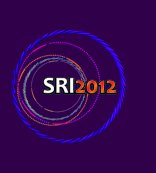Speaker
Dr
Lothar Strüder
(MPE, Semiconductor Laboratory)
Description
Fourth generation accelerator-based light sources, such as EUV and X-ray Free Electron Lasers (XFELs), deliver ultra-brilliant (~1012-1013 photons per bunch) coherent radiation in femtosecond (~10 fs to 100 fs) pulses and, thus, require novel focal plane instrumentation in order to fully exploit their unique capabilities. As an additional challenge for detection devices, existing XFELs (FLASH, Hamburg, LCLS, Menlo Park, SACLA, Hyogo) cover a broad range of photon energies from the EUV to the hard X-ray regime for single shot experiments and experiments with frame rates from 5 to 120 Hz.
In order to meet these challenges, the Max Planck Advanced Study Group (ASG) has designed the CFEL-ASG Multi Purpose (CAMP) chamber. It is equipped with specially developed photon and charged particle detection devices appropriate to cover large solid-angles. A variety of different experiments are supported, such as atomic, (aligned) molecular and cluster jets, particle injectors for bio-samples or fixed target arrangements. CAMP houses a novel, large-area, broadband (30 eV to 15 keV), high-dynamic-range, single-photon-counting and imaging X-ray detectors based on the pnCCDs with a format of 512 x 1024 pixel and a pixel size of 75 x 75 µm2 [1]. Results from various beamtimes at FLASH, LCLS and SACLA will be given and the operational experience will be summarized.
A new instrument – actually under development – consists of 1024 x 1024 pixel arrays having a total, monolithic sensitive area per module of about 60 cm2. The devices are 4-side buttable with an insensitive gap of approximately 1.5 mm in between. The new mounting and thermal coupling allows for a thermal homogeneity and stability of about 1 K over the full area under operating conditions. Due to the double sided processing of the pnCCD chips the device is back illuminated with a thin radiation entrance window for photon energies with high QE from 30 eV up to 15 keV. The entrance window is covered with an optical light blocking filter with an attenuation of light between 200 nm and 900 nm of the order of 105. Each megapixel unit is an independent detector system with frame rate capabilities up to 400 frames per second and a noise floor of less than 5 electrons at the highest gain and 20 electrons at the lowest. In the spectroscopic mode (high gain) every pixel can cope with approx. 1 x 104 electrons in the low gain mode this can go up to 106 electrons per pixel. We will show the results of the improvement of charge handling capacity (CHC) in real experiments.
The focus of the talk will be on the improvement of the performance of the pnCCDs over the last 18 months, in terms of noise, charge handling capacity, readout speed and the realization of very different focal plane configurations due to the new modular 4-side buttable concept of the X-ray camera.
Author
Dr
Lothar Strüder
(MPE, Semiconductor Laboratory)

